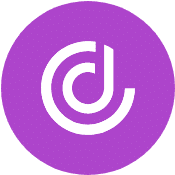Consumption Forecasting
Table of Contents
Table of Contents
What is Consumption Forecasting?
Consumption forecasting predicts future demand for goods, services, or resources by analyzing historical usage patterns and external factors. It helps businesses in retail, energy, and cloud services anticipate needs, reduce costs, and optimize resources, ensuring that they meet future demand without overproduction or shortages.
Synonyms
- Demand forecasting
- Consumption-based forecasting
- Resource consumption forecasting
- Usage forecasting
- Utilization forecasting
Why Consumption Forecasting is Important
Consumption forecasting plays a crucial role in business strategy for several reasons:
- Optimizes supply chains by helping businesses align inventory and resources with anticipated demand, reducing stockouts and overproduction.
- Improves cost management, allowing companies to better control costs (operational and production) by forecasting future needs.
- Enables competitive pricing with consumption-based pricing models that set rates that align with expected customer consumption.
- Enhances resource allocation in industries like energy and cloud services, minimizing waste.
- Increases customer satisfaction by predicting demand and maintaining product availability and consistent service levels.
Key Components of Consumption Forecasting
Successful consumption forecasting relies on several elements that provide a comprehensive view of future demand.
Historical Data
The foundation of any forecast is accurate historical data. This includes past consumption patterns, such as previous sales, energy usage, or resource allocation trends, which serve as the baseline for future predictions.
External Factors
Market conditions, economic shifts, and seasonal changes can significantly influence consumption patterns. These external factors must be integrated into forecasts to improve accuracy and account for potential fluctuations in demand.
Real-Time Data
Incorporating real-time data helps businesses adjust forecasts as new information becomes available. This makes predictions more responsive to current trends, enabling quicker decisions and more adaptive strategies.
Forecasting Models
Various statistical and machine learning forecasting models are applied to analyze data and predict future consumption. Time-series analysis, regression models, and machine learning techniques like neural networks all contribute to refining these forecasts.
Types of Consumption Forecasting
There are several types of consumption forecasting based on the business context:
Short-Term Forecasting
Short-term forecasting predicts consumption over brief periods, such as hours, days, or weeks. This method is crucial in industries like energy, where demand can fluctuate significantly within short timeframes, allowing for quick adjustments in supply.
Long-Term Forecasting
Long-term forecasting looks at consumption over months or years. It is typically used for strategic planning, helping businesses in industries like manufacturing and retail make decisions about inventory, staffing, and budgeting for future growth.
Energy Consumption Forecasting
In the energy sector, accurate forecasting of power usage is necessary for balancing supply and demand. Utilities use forecasts to optimize power generation, prevent blackouts, and reduce operational costs.
Cloud Resource Forecasting
Cloud service providers rely on consumption forecasting to predict the usage of computing resources like storage, bandwidth, and processing power. This enables them to scale infrastructure efficiently and manage costs while maintaining high service levels.
Retail and Supply Chain Forecasting
In retail, forecasting customer demand is needed to manage inventory and avoid stockouts. By predicting trends, retailers can prepare for peak shopping periods and adjust supply chain operations accordingly.
Forecasting Models and Techniques
Various forecasting techniques are used to predict consumption, depending on the industry and available data:
Time-Series Analysis
Time-series analysis involves examining historical data over time to predict future values. This technique is great for spotting trends and patterns, such as seasonal changes in demand. One common approach is the ARIMA model, which can help businesses anticipate future consumption based on past data.
Machine Learning Models
Machine learning models are perfect for handling large, complex datasets. They’re great at detecting patterns that traditional models might miss and can adapt as more data becomes available. Popular techniques include support vector machines (SVM), neural networks, and decision trees, which continuously learn and improve forecasts.
Regression Models
Regression models help forecast demand by examining how different factors impact consumption. For example, a regression model could reveal how weather conditions affect energy usage, allowing businesses to plan ahead based on those external variables.
Moving Averages
Moving averages smooth out short-term fluctuations by averaging data over a certain period, making it easier to see long-term trends. This simple method is often used in industries with steady demand to avoid overreacting to minor daily changes.
Simulation Models
Simulation models are helpful when historical data is limited or when forecasting complex scenarios. These models run multiple simulations to predict how various factors could impact future consumption, making them ideal for new market entries or uncertain environments.
Challenges in Consumption Forecasting
Consumption forecasting can be challenging due to several factors:
Data Quality and Availability: Accurate forecasting relies on high-quality historical data. Inconsistent or incomplete data can skew results, leading to unreliable forecasts.
External Influences: Factors like economic changes, new competitors, or even sudden shifts in consumer behavior can disrupt consumption patterns and make it difficult to predict future demand accurately.
Complexity of Models: Advanced forecasting models like neural networks or machine learning require significant expertise and computational resources, which may not be readily available to all businesses.
Forecasting Accuracy: Forecasting inherently involves a degree of uncertainty, and it is not always possible to predict consumption with 100% accuracy. Forecasts may need to be continuously updated and refined based on real-time data.
Seasonal Variations: Consumption often varies due to seasonality (e.g., holiday shopping spikes or increased energy usage in winter), requiring models that can account for these fluctuations.
Forecast Consumption in Systems
Consumption forecasting is commonly integrated into Enterprise Resource Planning (ERP) and Advanced Supply Chain Planning (ASCP) systems. These systems allow businesses to manage and adjust forecasts automatically based on real-time data inputs.
Best Practices in Consumption Forecasting
Organizations can improve their consumption forecasting by following a few best practices:
Leverage Real-Time Data
Incorporating real-time data into your forecasting models ensures that your predictions are always up-to-date. Real-time inputs like live sales data, weather conditions, or even social media trends can significantly enhance the accuracy of forecasts by capturing the latest market shifts. This allows businesses to adjust quickly and remain agile in rapidly changing environments.
Our tip: Don’t wait for a quarterly review to adjust your forecasts. Use real-time data feeds to fine-tune predictions on an ongoing basis. This way, you can respond to sudden changes in demand without getting caught off guard.
Use Multiple Models
No single forecasting model fits every situation. Combining different models—like time-series analysis with machine learning—can provide a more rounded and reliable forecast. Using multiple models helps capture both short-term and long-term trends, smoothing out inconsistencies that any one model might overlook.
Our tip: Think of it as using different tools for different jobs. Mix and match models based on your data and your business’s specific needs. This blend of techniques will give you more accurate forecasts from which to make decisions.
Incorporate External Variables
Factors like economic conditions, seasonality, and customer behavior patterns can significantly impact consumption. Ignoring these external variables could lead to inaccurate forecasts. By integrating external data sources into your forecasting models, you can create a more realistic prediction that reflects the full context of your business environment.
Our tip: Don’t just rely on internal data. Bring in external factors like market trends and consumer sentiment. It’s not about overloading your models with too much information but ensuring you account for the right influences.
Regularly Review and Update Forecasts
Regularly reviewing and adjusting your forecasts ensures they stay accurate as new data becomes available. Markets, consumer preferences, and external conditions evolve, and your forecasts need to reflect these changes to remain effective.
Our tip: Schedule regular check-ins on your forecasting models. Depending on your business cycles, make it a habit to reassess them monthly or quarterly and tweak them as needed to stay ahead of the curve.
Collaborate Across Departments
Forecasting works best when multiple departments are involved. Sales, marketing, operations, and finance teams all contribute valuable insights that enhance the accuracy of predictions. Cross-departmental collaboration ensures forecasts are aligned with broader business strategies and grounded in real-world insights.
Our tip: Don’t leave forecasting to just one team. Get input from different departments so everyone’s on the same page. When sales, operations, and finance collaborate, forecasts are more accurate and more actionable.
People Also Ask
How does consumption forecasting benefit customer satisfaction?
Consumption forecasting helps businesses anticipate customer demand, ensuring they have the right products or services available when needed. By accurately predicting demand, businesses can avoid stockouts or service interruptions and improve customer satisfaction and loyalty.
What industries rely most heavily on consumption forecasting?
Industries like SaaS, retail, energy, manufacturing, and cloud services rely heavily on consumption forecasting. In retail, forecasting helps manage inventory and stock levels; in energy, it ensures efficient power generation; manufacturing uses it to plan production, while cloud services forecast customer usage of resources like storage and bandwidth.
What is the difference between consumption forecasting and demand forecasting?
While often used interchangeably, consumption forecasting focuses explicitly on predicting the actual usage of resources, services, or products, often considering historical consumption data. Demand forecasting, on the other hand, is broader and includes anticipating customer desire or interest in a product, which may or may not lead to actual consumption.
What are common challenges businesses face with real-time consumption forecasting?
Businesses may struggle with integrating large volumes of data from multiple sources, ensuring data quality, and maintaining the infrastructure needed for real-time updates. Additionally, making sense of fluctuating real-time inputs can complicate forecasts, requiring constant adjustments to maintain accuracy.



